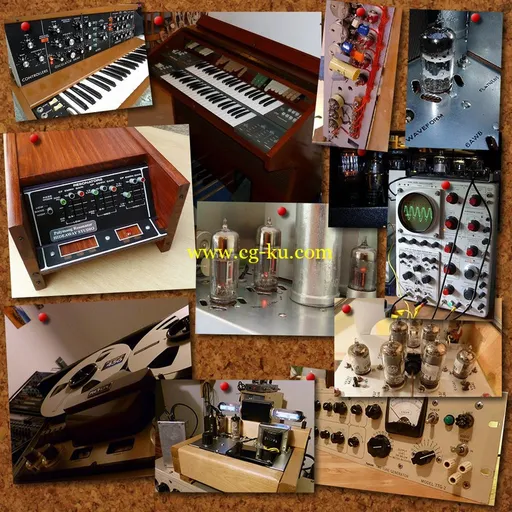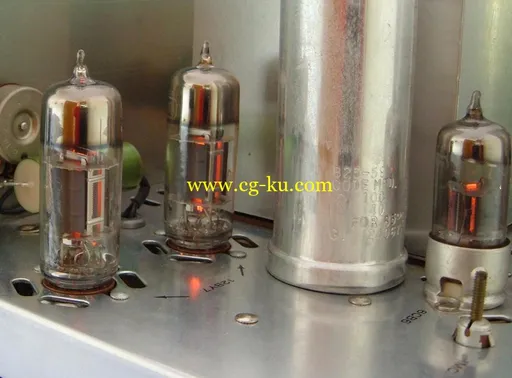
Hideaway Studio The Orbitone Collection KONTAKT | 430.8 MB
Hideaway Studio Presents the Follow On to the S-VX Library: The Orbitone Collection. A selection of complex warm electronic textures made with an unusual combination of 1972 Eminent 310U, a rehoused 1978 Polymoog Resonator Section, 1976 Minimoog Model D and 1938 Novachord all processed with vintage classic analog and tube technology and brought together in the same proven 4-voice layering engine as the S-VX library.

1972 Eminent 310U (strings, pads, resonator choir, e-piano, organ), 1976 Minimoog (brass, pads, bells, chimes), 1938 Novachord (strings, e-piano), rehoused 1978 Polymoog Formant Resonator Section (choir), 1976 Revox G36 tube half track tape machine (g36 choir), Panoramic tube Dual Tone Generator (chimes, e-piano), two 1967 Heathkit EUW-27 tube signal generators (chimes, e-piano), ARP Omni Chorus section (strings), Hideaway Studio Triple Tube Hybrid Phaser (evolving pads, phased chimes) and Dual Tube Hybrid Filter (underwurlde sweep), Tube Ring Modulator (bell ratios), Discrete Dual Exponential Sawtooth Generator (french horns), Tube Overdrive and Passive Triple L/C Resonator buffered with Y-amplifiers from a 1968 Tektronix tube scope! (deep resonator vox), All sound sources captured via two Hideaway Studio Type TEQ-9B Active Tube EQs in 24-bits with the RME Fireface.

Rather than simply making yet another virtual instrument, the arrival of a recently restored 310U was the perfect excuse to bring together a taster of a number of combined sound sources and techniques I’ve been working on to create rich, warm and complex textures. In particular I’ve fallen in love with the sheer musicality and magic of tube oscillators and wave shaping coupled with rediscovering classic analog synthesis and effects.
This has formed the basis of a new follow on to the recently released S-VX library and created very much with the idea of the two libraries being used in tandem to offer a very significant degree of opportunity for layering and blending new sounds.
The Orbitone Collection features the same proven 4-voice layering engine but operating on a brand new sample set made using a very different set of techniques to S-VX but with the similar timbres and textures in mind.
Like S-VX, Minimoog 7751 was both sampled directly and also washed through the Triple Tube Hybrid Phaser to form a number of looped textures with movement. Similarly, although the 310U was sampled in isolation, it was also passed through the rehoused resonator section of a Polymoog to magically turn brass formants into a choir!
Several tube wave shaping circuits, an L/C resonator based on the Novachord and vintage signal generators were utilised to produce deep vocal formant drones. The Tube Strings and were a blend of Novachord, ARP Omni and Discrete Tube Synthesis. The e-Piano was created by layering piano like timbres from the Novachord, the 310U and three tube oscillators mixed and tube wave shaped.
The Arrival of 91-0071750…
Over the past few months a dedicated chap from Holland called Albert Steenbergen has been doing a wonderful restoration job for me painstakingly cleaning and recapping a monster. Albert is best known for keeping Jean Michel Jarre’s infamous fleet of 310’s alive and well for use on tour and simply must win the title of World’s Best and Most Patient 310U Guru!
The beast recently safely arrived in the UK in a large crate in the pouring rain which resulted in a manic struggle with a friend to drag her inside through a hastily unhinged doorway – disaster narrowly averted when the 240lb crate very nearly toppled over backwards off the door ledge!
Some Background on the Eminent 310U
The Eminent 310 “Unique” is largely considered to feature the world’s first commercial string synthesizer section (although that title really ought to go to Laurens Hammond’s incredible 1938 Novachord!).
The 310U was designed and manufactured in Holland by Eminent and released in 1972. This boldly unusual combination of electronic organ and polyphonic synthesizer probably would have probably slipped into historical oblivion if it wasn’t for Jean Michel Jarre discovering its potential and using it to great effect in 1976 on his hugely successful and pioneering album, Oxygene. Although this is common knowledge, what is less understood is that far more than simply the infamous string section was put to use in the making of this landmark release.
Although the instrument itself didn’t become hugely popular outside of Holland, Eminent licensed out their string synth technology to ARP to become the successful Solina and Omni range. The 310U boasts really quite an unusual architecture permitting a mixture of sustained and percussive envelopes to be applied to combinations of all of the timbres which can be layered together. There is also a gorgeous swirly six-stage analog stereo chorus “Orbitone” section and built in spring reverb. The instrument was significantly more complex than most combo organs of the era due to in the main to the polyphonic percussive and sustain controls using discrete analog technology throughout.
In fact, having studied the workings of both instruments in detail, I’d have to say the 310U is in many ways the closest successor in ethos, character and architecture to the 1938 Novachord and marks an historically important crossover between electronic organ and polyphonic synthesizer technologies.
发布日期: 2014-08-18